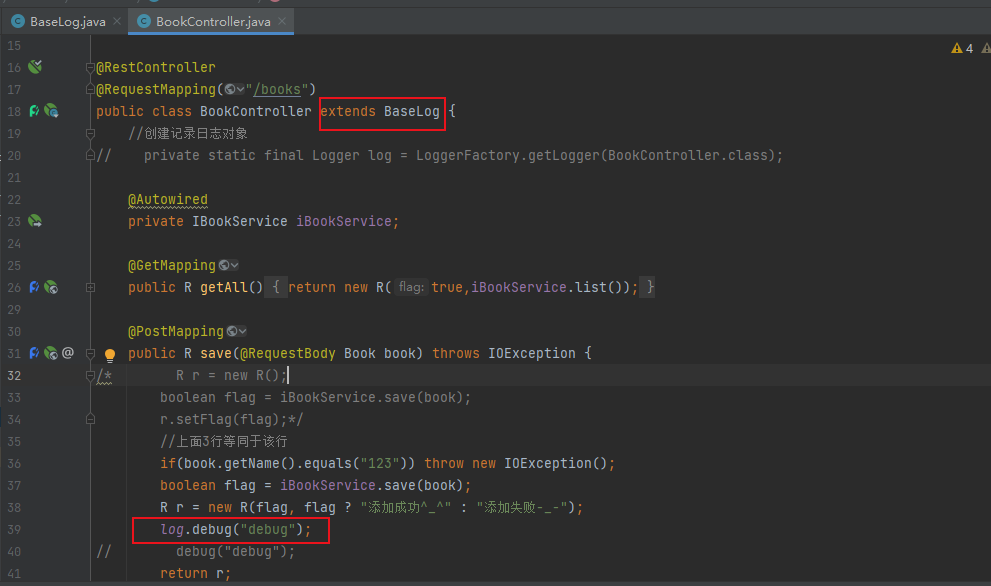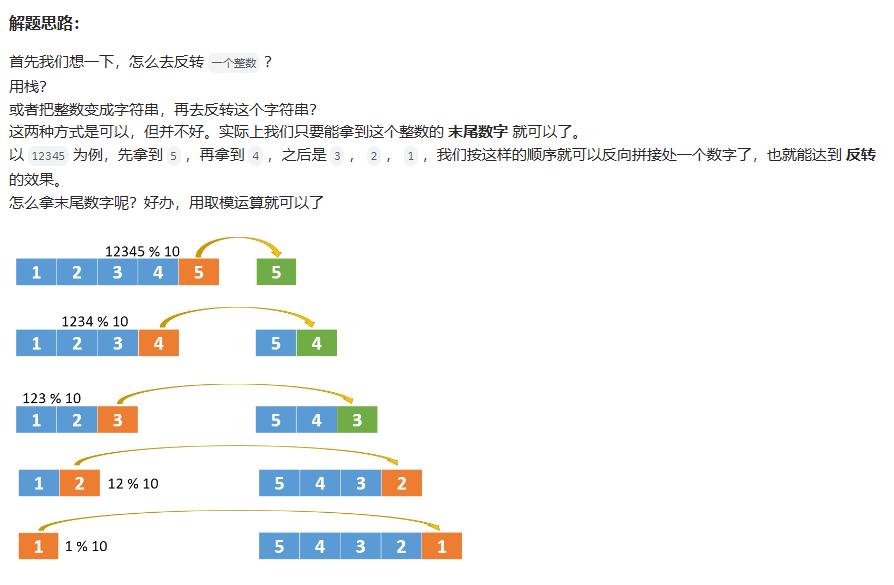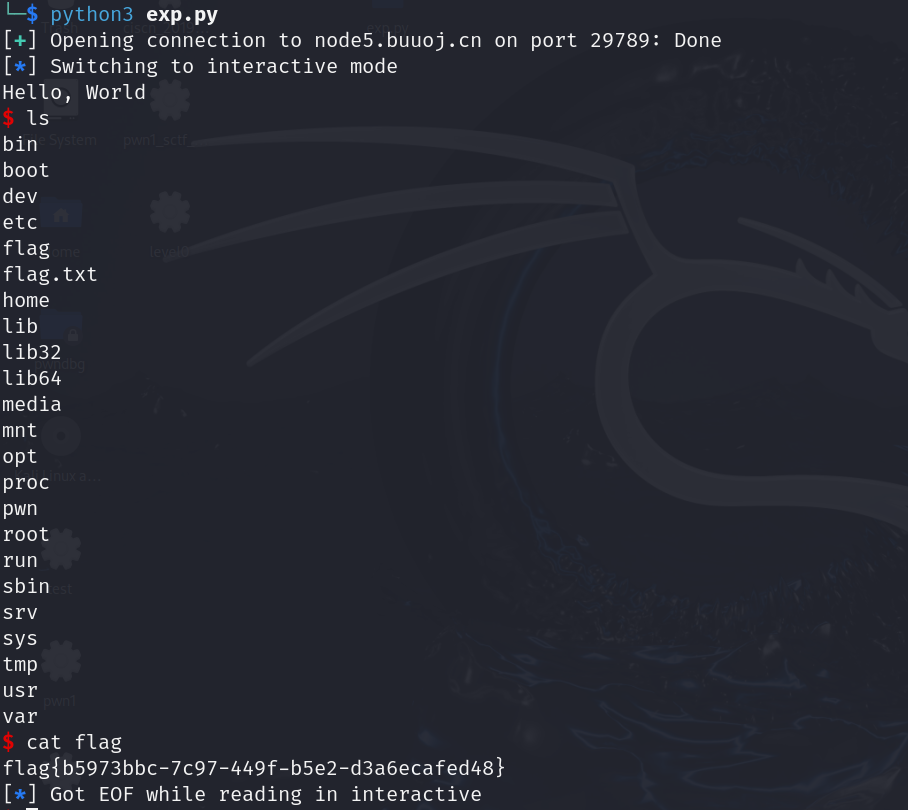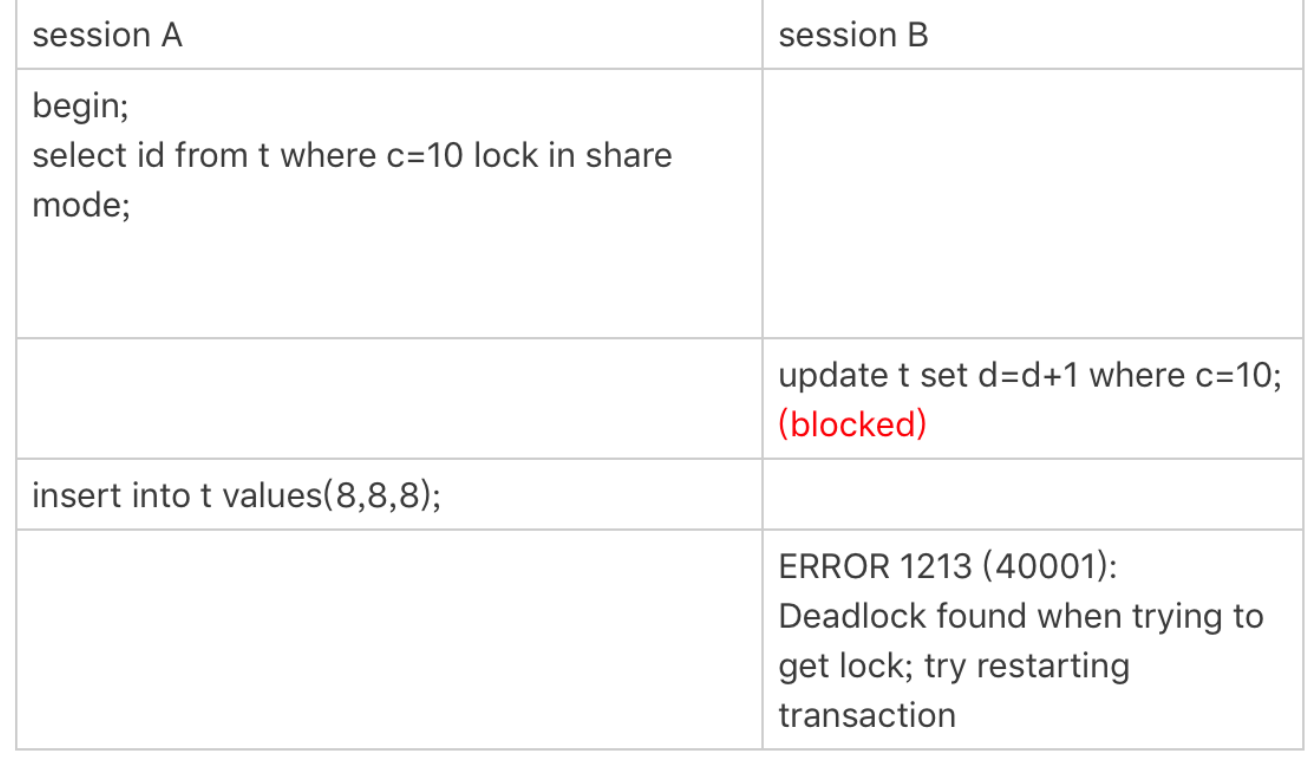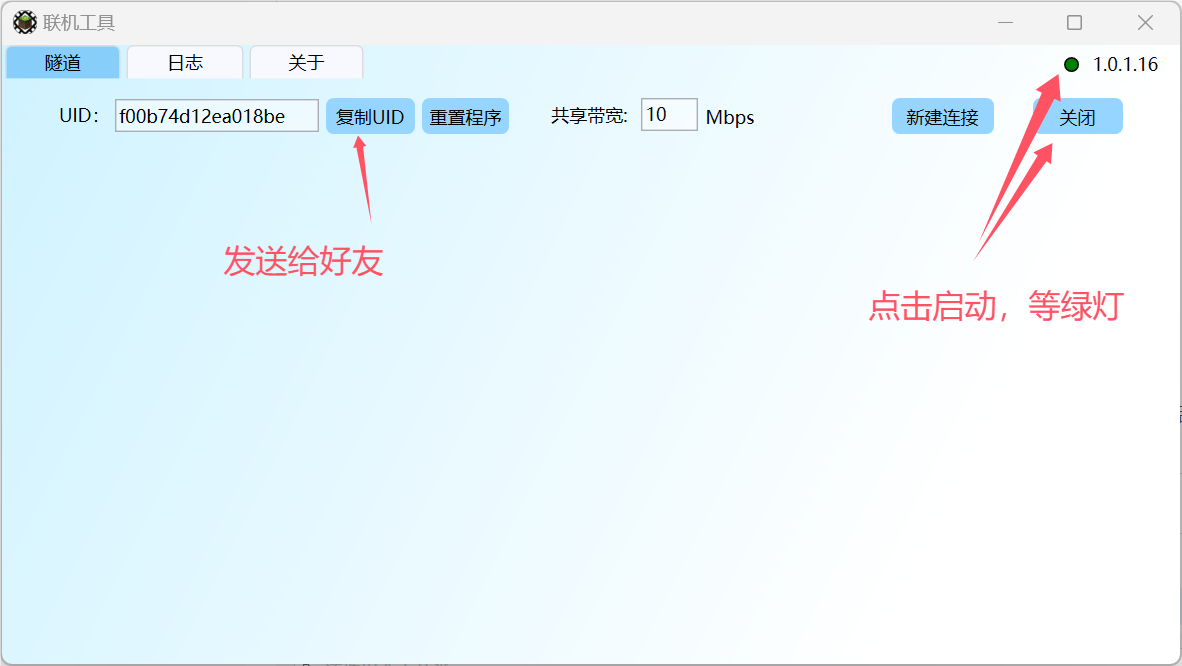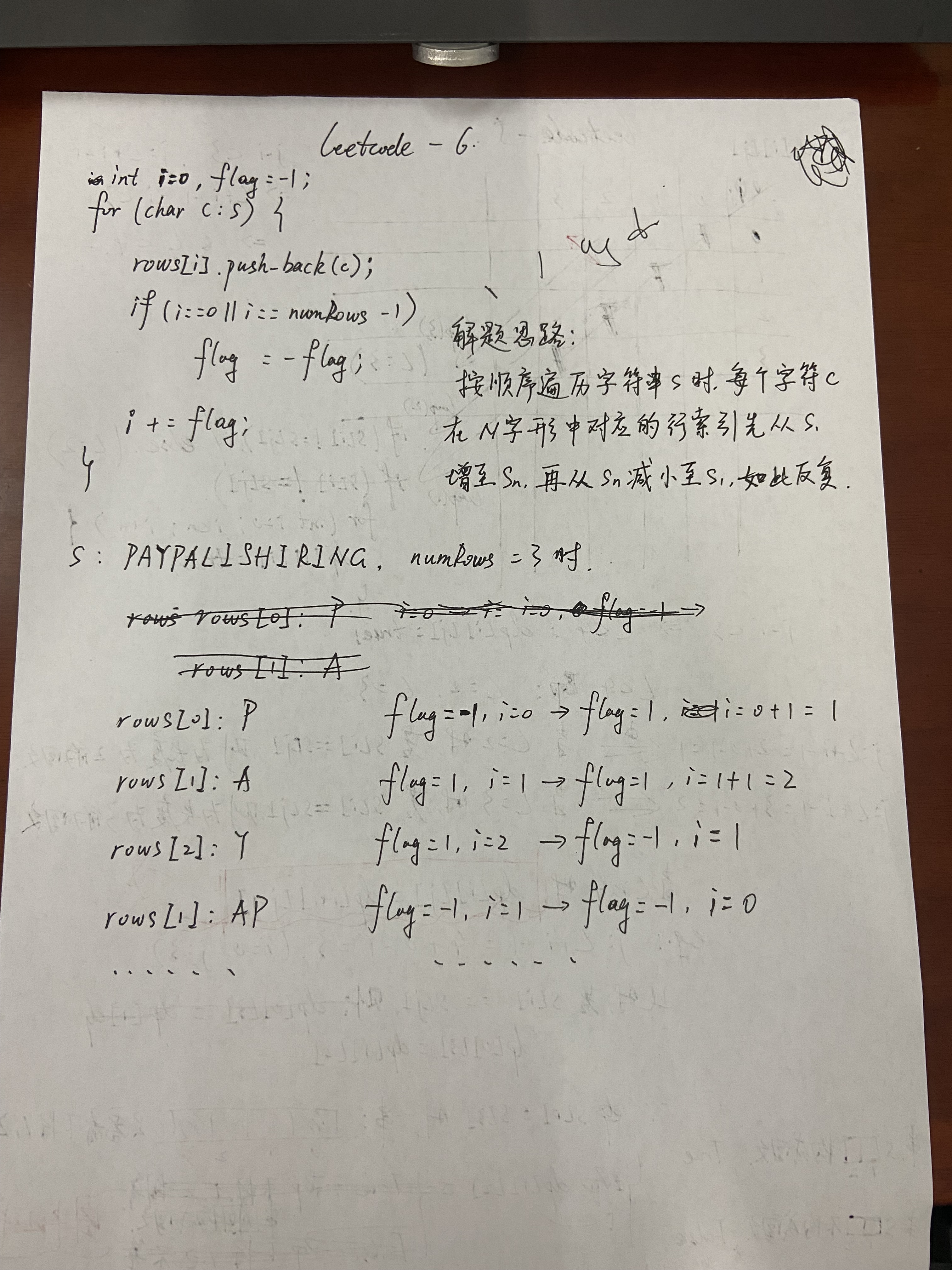Author: ACatSmiling
Since: 2024-07-28
概述
在 Java 语言中,数组(Array)和集合都是对多个数据进行存储操作的结构,简称Java 容器。此时的存储,主要指的是内存层面的存储,不涉及到持久化的存储。
数组在内存存储方面的特点:
- 数组一旦初始化以后,其长度就确定了。
- 数组一旦定义好,其元素的类型也就确定了。
数组在存储数据方面的弊端:
- 数组一旦初始化以后,其长度就不可修改,不便于扩展。
- 数组中提供的属性和方法少,不便于进行添加、删除、插入等操作,且效率不高。
- 数组中没有现成的属性和方法,去直接获取数组中已存储的元素的个数(只能直接知道数组的长度)。
- 数组存储的数据是有序的、可重复的。对于无序、不可重复的需求,不能满足,即数组存储数据的特点比较单一。
Java 集合类可以用于存储数量不等的多个对象,还可用于保存具有映射关系的关联数组。
Java 集合框架可分为Collection和Map两种体系:
- Collection 接口 :单列集合,用来存储一个一个的对象。
List 接口:存储有序的、可重复的数据。包括:ArrayList、LinkedList、Vector。Set 接口:存储无序的、不可重复的数据。包括:HashSet、LinkedHashSet、TreeSet。
Map 接口:双列集合,用来存储具有映射关系 "key - value 对" 的数据。包括:HashMap、LinkedHashMap、TreeMap、Hashtable、Properties。
List 接口
List 集合类中元素有序、且可重复,集合中的每个元素都有其对应的顺序索引。
ArrayList
基础属性:
public class ArrayList<E> extends AbstractList<E>implements List<E>, RandomAccess, Cloneable, java.io.Serializable
{@java.io.Serialprivate static final long serialVersionUID = 8683452581122892189L;/*** Default initial capacity.*/private static final int DEFAULT_CAPACITY = 10;/*** Shared empty array instance used for empty instances.*/private static final Object[] EMPTY_ELEMENTDATA = {};/*** Shared empty array instance used for default sized empty instances. We* distinguish this from EMPTY_ELEMENTDATA to know how much to inflate when* first element is added.*/private static final Object[] DEFAULTCAPACITY_EMPTY_ELEMENTDATA = {};/*** The array buffer into which the elements of the ArrayList are stored.* The capacity of the ArrayList is the length of this array buffer. Any* empty ArrayList with elementData == DEFAULTCAPACITY_EMPTY_ELEMENTDATA* will be expanded to DEFAULT_CAPACITY when the first element is added.*/transient Object[] elementData; // non-private to simplify nested class access/*** The size of the ArrayList (the number of elements it contains).** @serial*/private int size;
}
本文源码,均基于 JDK 17。
new ArrayList() 时,底层 Object[] 数组 elementData 初始化为 {},是一个长度为 0 的空数组:
/*** Constructs an empty list with an initial capacity of ten.*/
public ArrayList() {this.elementData = DEFAULTCAPACITY_EMPTY_ELEMENTDATA;
}
第一次调用 add() 方法,初始化底层 Object[] 数组 elementData 的长度为 10,并将元素添加到 elementData 中:
/*** Appends the specified element to the end of this list.** @param e element to be appended to this list* @return {@code true} (as specified by {@link Collection#add})*/
public boolean add(E e) {modCount++;add(e, elementData, size);return true;
}
/*** This helper method split out from add(E) to keep method* bytecode size under 35 (the -XX:MaxInlineSize default value),* which helps when add(E) is called in a C1-compiled loop.*/
private void add(E e, Object[] elementData, int s) {// 第一次执行 add() 方法,size 属性的值为 0,elementData.length 为 0if (s == elementData.length)elementData = grow();// 添加元素到数组中elementData[s] = e;size = s + 1;
}
private Object[] grow() {return grow(size + 1);
}
/*** Increases the capacity to ensure that it can hold at least the* number of elements specified by the minimum capacity argument.** @param minCapacity the desired minimum capacity* @throws OutOfMemoryError if minCapacity is less than zero*/
private Object[] grow(int minCapacity) {int oldCapacity = elementData.length;if (oldCapacity > 0 || elementData != DEFAULTCAPACITY_EMPTY_ELEMENTDATA) {int newCapacity = ArraysSupport.newLength(oldCapacity,minCapacity - oldCapacity, /* minimum growth */oldCapacity >> 1 /* preferred growth */);return elementData = Arrays.copyOf(elementData, newCapacity);} else {// 初始化数组,长度为 DEFAULT_CAPACITY,即 10return elementData = new Object[Math.max(DEFAULT_CAPACITY, minCapacity)];}
}
之后,每次执行 add() 方法,直接将元素添加到 elementData 对应的位置,直到第 11 次添加元素。此时,添加的元素的总数,已经超过了数组的长度,需要进行扩容操作:
/*** This helper method split out from add(E) to keep method* bytecode size under 35 (the -XX:MaxInlineSize default value),* which helps when add(E) is called in a C1-compiled loop.*/
private void add(E e, Object[] elementData, int s) {// 第 11 次添加元素,此时,满足 s == elementData.length 条件if (s == elementData.length)elementData = grow();elementData[s] = e;size = s + 1;
}
默认情况下,数组长度扩容为原来容量的 1.5 倍,同时,将原有数组中的数据复制到新的数组中:
/*** Increases the capacity to ensure that it can hold at least the* number of elements specified by the minimum capacity argument.** @param minCapacity the desired minimum capacity* @throws OutOfMemoryError if minCapacity is less than zero*/
private Object[] grow(int minCapacity) {int oldCapacity = elementData.length;// 满足 oldCapacity > 0 条件if (oldCapacity > 0 || elementData != DEFAULTCAPACITY_EMPTY_ELEMENTDATA) {// 扩容数组长度到原来的 1.5 倍int newCapacity = ArraysSupport.newLength(oldCapacity,minCapacity - oldCapacity, /* minimum growth */oldCapacity >> 1 /* preferred growth */);// 复制原数组数据到新数组return elementData = Arrays.copyOf(elementData, newCapacity);} else {return elementData = new Object[Math.max(DEFAULT_CAPACITY, minCapacity)];}
}
结论:
- ArrayList 是第一次添加元素时,才创建一个初始容量为 10 的数组,延迟了数组的创建。
- 添加数据时,如果底层的数组需要扩容,均扩容为原来容量的 1.5 倍,同时,将原有数组中的数据复制到新的数组中。
- 开发中使用 ArrayList 时,建议按需求在初始化时就指定 ArrayList 的容量,以尽可能的避免扩容。
LinkedList
双向链表,内部定义了内部类 Node,作为 LinkedList 中保存数据的基本结构。
LinkedList 内部没有声明数组,而是定义了 Node 类型的 first 和 last,用于记录首末元素:
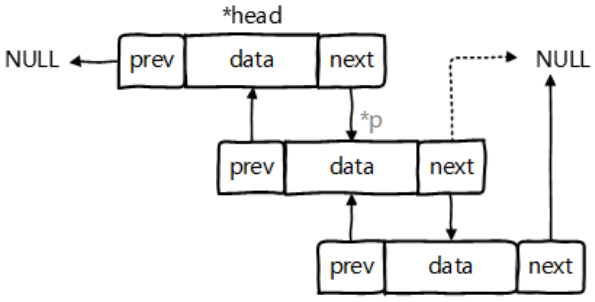
对于
频繁的插入或删除元素的操作,建议使用 LinkedList 类,效率较高。
new LinkedList() 时,内部声明了 Node 类型的 first 和 last 属性,默认值为 null:
public class LinkedList<E>extends AbstractSequentialList<E>implements List<E>, Deque<E>, Cloneable, java.io.Serializable
{transient int size = 0;/*** Pointer to first node.*/transient Node<E> first;/*** Pointer to last node.*/transient Node<E> last;/*** Constructs an empty list.*/public LinkedList() {}
}
// Node 内部类
private static class Node<E> {// 当前 Node 存储的数据E item;// 指向链表的后一个元素Node<E> next;// 指向链表的前一个元素Node<E> prev;Node(Node<E> prev, E element, Node<E> next) {this.item = element;this.next = next;this.prev = prev;}
}
调用 add() 方法添加元素:
/*** Appends the specified element to the end of this list.** <p>This method is equivalent to {@link #addLast}.** @param e element to be appended to this list* @return {@code true} (as specified by {@link Collection#add})*/
public boolean add(E e) {linkLast(e);return true;
}
/*** Links e as last element.*/
void linkLast(E e) {// last,原链表的最后一个对象final Node<E> l = last;// 创建一个新的 Node 对象final Node<E> newNode = new Node<>(l, e, null);// 当前新创建的 Node 对象,成为新链表的最后一个对象last = newNode;if (l == null)// 如果原链表为 null,则将当前新创建的 Node 对象指定为链表的第一个节点 firstfirst = newNode;else// 如果原链表不为 null,则将原链表的最后一个对象,指向当前新的 Node 对象l.next = newNode;size++;modCount++;
}
Set 接口
Set 集合存储无序的、不可重复的数据,如果把两个相同的元素加入同一个 Set 集合中,则添加操作失败。
- 无序性:不等于随机性。以 HashSet 为例,存储的数据在底层数组中并非按照数组索引的顺序添加,而是根据数据的哈希值决定的。
- 不可重复性:保证添加的元素按照 equals() 判断时,不能返回 true。即:相同的元素只能添加一个。
Set 接口是 Collection 的子接口,Set 接口没有提供额外的方法,使用的都是Collection中声明过的方法。
Set 判断两个对象是否相同不是使用 == 运算符,而是根据 equals()。对于存放在 Set(主要指:HashSet、LinkedHashSet)容器中的对象,其对应的类一定要重写equals()和hashCode(),以实现对象相等规则。
- 要求:重写的 hashCode() 和 equals() 尽可能保持一致性,即:
相等的对象必须具有相等的散列码。- 如果不重写所添加元素所在类的 hashCode(),则会调用 Object 类的 hashCode(),该方法是产生一个随机数,因此,即使添加两个一样的元素,其 hashCode 值也可能不同,也就都能添加成功。
- 重写两个方法的小技巧:对象中用作 equals() 方法比较的 Field,都应该用来计算 hashCode 值。
- TreeSet 比较两个元素是否相同的方法,不是 equals() 和 hashCode(),而是元素对应类的排序方法。
重写 hashCode() 方法的基本原则:
- 在程序运行时,同一个对象多次调用 hashCode() 方法应该返回相同的值。
- 当两个对象的 equals() 方法比较返回 true 时,这两个对象的 hashCode() 方法的返回值也应相等。
- 对象中用作 equals() 方法比较的 Field,都应该用来计算 hashCode 值。
重写 equals() 方法的基本原则,以自定义的 Customer 类为例,何时需要重写 equals():
- 如果一个类有自己特有的 "逻辑相等" 概念,当重写 equals() 的时候,总是需要重写 hashCode()。因为根据一个类改写后的 equals(),两个截然不同的实例有可能在逻辑上是相等的,但是,根据 Object 类的 hashCode(),它们仅仅是两个对象。这种情况,违反了 "相等的对象必须具有相等的散列码" 的原则。
结论:重写 equals() 的时候,一般都需要同时重写 hashCode() 方法。通常参与计算 hashCode 的对象的属性也应该参与到 equals() 中进行计算。
Eclipse/IDEA 工具里 hashCode() 的重写,为什么会有 31 这个数字:
@Override public int hashCode() {int result = name.hashCode();result = 31 * result + age;return result; }
- 选择系数的时候要选择尽量大的系数,因为如果计算出来的 hashCode 值越大,所谓的冲突就越少,查找起来效率也会提高。---> 减少冲突
- 31 只占用 5 bits,相乘造成数据溢出的概率较小。
- 31 可以由
i * 31 == (i << 5) - 1来表示,现在很多虚拟机里面都有做相关优化。---> 提高算法效率- 31 是一个素数,素数作用就是如果用一个数字来乘以这个素数,那么最终出来的结果只能被素数本身和被乘数还有 1 来整除!---> 减少冲突
HashSet
HashSet 按 Hash 算法来存储集合中的元素,因此具有很好的存取、查找、删除性能。
HashSet 具有以下特点:
- 不保证元素的排列顺序。
- 不是线程安全的。
- 集合元素可以是 null,但是只能有一个。
HashSet 的底层,使用的是 HashMap:
/*** Constructs a new, empty set; the backing {@code HashMap} instance has* default initial capacity (16) and load factor (0.75).*/
public HashSet() {map = new HashMap<>();
}
LinkedHashSet
LinkedHashSet 根据元素的 hashCode 值来决定元素的存储位置,但它同时使用双向链表维护元素的次序,这使得元素看起来是以插入顺序保存的。
- 遍历 LinkedHashSet 内部数据时,可以按照添加的顺序遍历。
LinkedHashSet 插入性能略低于 HashSet,但在迭代访问 Set 里的全部元素时有很好的性能。对于频繁的遍历操作,LinkedHashSet 效率高于 HashSet。
LinkedHashSet 的底层,使用的是 LinkedHashMap:
public LinkedHashSet() {super(16, .75f, true);
}
HashSet(int initialCapacity, float loadFactor, boolean dummy) {map = new LinkedHashMap<>(initialCapacity, loadFactor);
}
Map 接口
HashMap
HashMap 源码中的重要常量:
-
DEFAULT_INITIAL_CAPACITY:HashMap 的默认容量,16。/*** The default initial capacity - MUST be a power of two.*/ static final int DEFAULT_INITIAL_CAPACITY = 1 << 4; // aka 16 -
MAXIMUM_CAPACITY:HashMap 的最大支持容量,$2^{30}$。/*** The maximum capacity, used if a higher value is implicitly specified* by either of the constructors with arguments.* MUST be a power of two <= 1<<30.*/ static final int MAXIMUM_CAPACITY = 1 << 30; -
DEFAULT_LOAD_FACTOR:HashMap 的默认加载因子,0.75。/*** The load factor used when none specified in constructor.*/ static final float DEFAULT_LOAD_FACTOR = 0.75f;- 不同于 ArrayList,HashMap 不是在底层数组全部填满时才进行扩容操作,因为数组上有一些位置可能会一直都没有添加元素,但其他位置上元素可能有很多,导致链表和二叉树结构变多。因此,会在元素添加到一定数量时,就执行扩容操作,即添加元素数量达到 threshold 值时扩容。默认加载因子如果过小,会导致数组还有很多空位置时扩容,数组利用率低;默认加载因子如果过大,会导致数组中存在很多元素时才扩容,链表和二叉树结构过多。因此,默认加载因子在 0.7 ~ 0.75 左右比较合适。
-
TREEIFY_THRESHOLD:Bucket 中链表存储的 Node 长度大于该默认值,判断是否转换为红黑树,默认为 8。/*** The bin count threshold for using a tree rather than list for a* bin. Bins are converted to trees when adding an element to a* bin with at least this many nodes. The value must be greater* than 2 and should be at least 8 to mesh with assumptions in* tree removal about conversion back to plain bins upon* shrinkage.*/ static final int TREEIFY_THRESHOLD = 8; -
UNTREEIFY_THRESHOLD:Bucket 中红黑树存储的 Node 长度小于该默认值,转换为链表,默认为 6。/*** The bin count threshold for untreeifying a (split) bin during a* resize operation. Should be less than TREEIFY_THRESHOLD, and at* most 6 to mesh with shrinkage detection under removal.*/ static final int UNTREEIFY_THRESHOLD = 6; -
MIN_TREEIFY_CAPACITY:桶中的 Node 被树化时最小的 hash 表容量,默认为 64。/*** The smallest table capacity for which bins may be treeified.* (Otherwise the table is resized if too many nodes in a bin.)* Should be at least 4 * TREEIFY_THRESHOLD to avoid conflicts* between resizing and treeification thresholds.*/ static final int MIN_TREEIFY_CAPACITY = 64;- 当桶中 Node 的数量大到需要变红黑树(8)时,若 hash 表容量小于 MIN_TREEIFY_CAPACITY,此时应执行 resize() 进行扩容操作。MIN_TREEIFY_CAPACITY 的值至少是 TREEIFY_THRESHOLD 的 4 倍。
-
table:存储元素的数组,长度总是 2 的 n 次幂。/*** The table, initialized on first use, and resized as* necessary. When allocated, length is always a power of two.* (We also tolerate length zero in some operations to allow* bootstrapping mechanics that are currently not needed.)*/ transient Node<K,V>[] table; -
entrySet:存储具体元素的集。
/*** Holds cached entrySet(). Note that AbstractMap fields are used* for keySet() and values().*/ transient Set<Map.Entry<K,V>> entrySet; -
size:HashMap 中已存储的键值对的数量。
/*** The number of key-value mappings contained in this map.*/ transient int size; -
modCount:HashMap 扩容和结构改变的次数。
/*** The number of times this HashMap has been structurally modified* Structural modifications are those that change the number of mappings in* the HashMap or otherwise modify its internal structure (e.g.,* rehash). This field is used to make iterators on Collection-views of* the HashMap fail-fast. (See ConcurrentModificationException).*/ transient int modCount; -
threshold:扩容的临界值,其值一般等于(容量 * 加载因子),(int) Math.min(capacity * loadFactor, MAXIMUM_CAPACITY + 1);。扩容的操作不是当底层数组全部被填满后再扩容,而是达到临界值后的下一次添加操作进行扩容。/*** The next size value at which to resize (capacity * load factor).** @serial*/ // (The javadoc description is true upon serialization. // Additionally, if the table array has not been allocated, this // field holds the initial array capacity, or zero signifying // DEFAULT_INITIAL_CAPACITY.) int threshold; -
loadFactor:加载因子。
/*** The load factor for the hash table.** @serial*/ final float loadFactor;
new HashMap<>() 时,赋值加载因子 loadFactor 为 DEFAULT_LOAD_FACTOR,即 0.75:
/*** Constructs an empty {@code HashMap} with the default initial capacity* (16) and the default load factor (0.75).*/
public HashMap() {this.loadFactor = DEFAULT_LOAD_FACTOR; // all other fields defaulted
}
第一次调用 put() 方法时,通过 resize() 方法,创建一个长度为 16 的 Node 数组:
/*** Associates the specified value with the specified key in this map.* If the map previously contained a mapping for the key, the old* value is replaced.** @param key key with which the specified value is to be associated* @param value value to be associated with the specified key* @return the previous value associated with {@code key}, or* {@code null} if there was no mapping for {@code key}.* (A {@code null} return can also indicate that the map* previously associated {@code null} with {@code key}.)*/
public V put(K key, V value) {// key 做 hashreturn putVal(hash(key), key, value, false, true);
}
/*** Implements Map.put and related methods.** @param hash hash for key* @param key the key* @param value the value to put* @param onlyIfAbsent if true, don't change existing value* @param evict if false, the table is in creation mode.* @return previous value, or null if none*/
final V putVal(int hash, K key, V value, boolean onlyIfAbsent,boolean evict) {Node<K,V>[] tab; Node<K,V> p; int n, i;if ((tab = table) == null || (n = tab.length) == 0)// 第一次调用 put() 方法,此时,table 未初始化,为 null,调用 resize() 方法,创建长度为 16 的 Node 数组n = (tab = resize()).length;// 然后,查看 Node 数组中的位置 i 的元素 p,是否为 nullif ((p = tab[i = (n - 1) & hash]) == null)// 如果 p 为 null,说明当前位置 i 没有元素,添加成功 ---> 情况 1tab[i] = newNode(hash, key, value, null);else {Node<K,V> e; K k;if (p.hash == hash &&((k = p.key) == key || (key != null && key.equals(k))))// 位置 i 上的元素,与当前待添加元素的 key 相同e = p;else if (p instanceof TreeNode)e = ((TreeNode<K,V>)p).putTreeVal(this, tab, hash, key, value);else {// 位置 i 上的元素,与当前待添加元素的 key 不同for (int binCount = 0; ; ++binCount) {// 位置 i 上,只有一个元素if ((e = p.next) == null) {// 位置 i 上的原元素指向当前待添加的元素,添加成功 ---> 情况 2 和 3p.next = newNode(hash, key, value, null);if (binCount >= TREEIFY_THRESHOLD - 1) // -1 for 1st// 如果链表的长度超过 8 时,判断是否转为红黑树结构treeifyBin(tab, hash);break;}// 位置 i 上,不止一个元素,依次获得该链表上的每一个元素,与当前待添加元素的 key,对比 hash 值和 equals() 方法if (e.hash == hash &&((k = e.key) == key || (key != null && key.equals(k))))break;p = e;}}if (e != null) { // existing mapping for keyV oldValue = e.value;if (!onlyIfAbsent || oldValue == null)e.value = value;afterNodeAccess(e);return oldValue;}}++modCount;if (++size > threshold)resize();afterNodeInsertion(evict);return null;
}
/*** Initializes or doubles table size. If null, allocates in* accord with initial capacity target held in field threshold.* Otherwise, because we are using power-of-two expansion, the* elements from each bin must either stay at same index, or move* with a power of two offset in the new table.** @return the table*/
final Node<K,V>[] resize() {Node<K,V>[] oldTab = table;int oldCap = (oldTab == null) ? 0 : oldTab.length;int oldThr = threshold;int newCap, newThr = 0;if (oldCap > 0) {if (oldCap >= MAXIMUM_CAPACITY) {threshold = Integer.MAX_VALUE;return oldTab;}else if ((newCap = oldCap << 1) < MAXIMUM_CAPACITY &&oldCap >= DEFAULT_INITIAL_CAPACITY)newThr = oldThr << 1; // double threshold}else if (oldThr > 0) // initial capacity was placed in thresholdnewCap = oldThr;else { // zero initial threshold signifies using defaults// 默认数组长度 16newCap = DEFAULT_INITIAL_CAPACITY;// 默认扩容的临界值 0.75 * 16 = 12newThr = (int)(DEFAULT_LOAD_FACTOR * DEFAULT_INITIAL_CAPACITY);}if (newThr == 0) {float ft = (float)newCap * loadFactor;newThr = (newCap < MAXIMUM_CAPACITY && ft < (float)MAXIMUM_CAPACITY ?(int)ft : Integer.MAX_VALUE);}// 赋值扩容的临界值 12threshold = newThr;@SuppressWarnings({"rawtypes","unchecked"})// 创建一个长度为 16 的 Node 数组Node<K,V>[] newTab = (Node<K,V>[])new Node[newCap];table = newTab;if (oldTab != null) {for (int j = 0; j < oldCap; ++j) {Node<K,V> e;if ((e = oldTab[j]) != null) {oldTab[j] = null;if (e.next == null)newTab[e.hash & (newCap - 1)] = e;else if (e instanceof TreeNode)((TreeNode<K,V>)e).split(this, newTab, j, oldCap);else { // preserve orderNode<K,V> loHead = null, loTail = null;Node<K,V> hiHead = null, hiTail = null;Node<K,V> next;do {next = e.next;if ((e.hash & oldCap) == 0) {if (loTail == null)loHead = e;elseloTail.next = e;loTail = e;}else {if (hiTail == null)hiHead = e;elsehiTail.next = e;hiTail = e;}} while ((e = next) != null);if (loTail != null) {loTail.next = null;newTab[j] = loHead;}if (hiTail != null) {hiTail.next = null;newTab[j + oldCap] = hiHead;}}}}}return newTab;
}
计算 key 的 hash 值:
/*** Computes key.hashCode() and spreads (XORs) higher bits of hash* to lower. Because the table uses power-of-two masking, sets of* hashes that vary only in bits above the current mask will* always collide. (Among known examples are sets of Float keys* holding consecutive whole numbers in small tables.) So we* apply a transform that spreads the impact of higher bits* downward. There is a tradeoff between speed, utility, and* quality of bit-spreading. Because many common sets of hashes* are already reasonably distributed (so don't benefit from* spreading), and because we use trees to handle large sets of* collisions in bins, we just XOR some shifted bits in the* cheapest possible way to reduce systematic lossage, as well as* to incorporate impact of the highest bits that would otherwise* never be used in index calculations because of table bounds.*/
static final int hash(Object key) {int h;return (key == null) ? 0 : (h = key.hashCode()) ^ (h >>> 16);
}
判断链表是否转红黑树:
/*** Replaces all linked nodes in bin at index for given hash unless* table is too small, in which case resizes instead.*/
final void treeifyBin(Node<K,V>[] tab, int hash) {int n, index; Node<K,V> e;if (tab == null || (n = tab.length) < MIN_TREEIFY_CAPACITY)// 如果底层数组的长度小于 64,只扩容,不转红黑树resize();else if ((e = tab[index = (n - 1) & hash]) != null) {TreeNode<K,V> hd = null, tl = null;do {TreeNode<K,V> p = replacementTreeNode(e, null);if (tl == null)hd = p;else {p.prev = tl;tl.next = p;}tl = p;} while ((e = e.next) != null);if ((tab[index] = hd) != null)hd.treeify(tab);}
}
总结:
- new HashMap<>() 时,底层没有创建数组,只赋值加载因子 loadFactor 为 0.75。
- 首次调用 put() 方法时,底层创建长度为 16 的 Node 数组。
- 执行 map.put(key1, value1) 操作,可能已经执行过多次 put() 方法:
-
首先,计算 key1 所在类的 hashCode() 以及其他操作计算 key1 的哈希值,此哈希值经过某种算法计算以后,得到在 Node 数组中的存放位置。
-
如果此位置上的数据为空,此时的 key1 - value1 添加成功。---> 情况 1
-
如果此位置上的数据不为空,意味着此位置上存在一个或多个数据,比较 key1 和已经存在的一个或多个数据的哈希值:
- 如果 key1 的哈希值与已经存在的数据的哈希值都不相同,此时 key1 - value1 添加成功。---> 情况 2
- 如果 key1 的哈希值和已经存在的某一个数据(key2 - value2)的哈希值相同,则调用 key1 所在类的 equals(key2),继续比较:
- 如果 equals() 返回 false:此时 key1 - value1 添加成功。---> 情况 3
- 如果 equals() 返回 true:使用 value1 替换 value2。
-
补充:关于情况 2 和情况 3,此时 key1 - value1 和原来的数据以链表的方式存储。
-
- 当数组的某一个索引位置上的元素以链表形式存在的数据个数 > 8 且当前数组的长度 > 64时,此时此索引位置上的数据改为使用红黑树存储。
存储结构:数组 + 链表 + 红黑树。

扩容过程:
- 当 HashMap 中的元素越来越多的时候,hash 冲突的几率也就越来越高,因为底层数组的长度是固定的。所以为了提高查询的效率,就要对 HashMap 的底层数组进行扩容,而在 HashMap 数组扩容之后,最消耗性能的点就出现了:原数组中的数据必须重新计算其在新数组中的位置,并放进去,这就是
resize()。 - 当 HashMap 中的元素个数超过 "数组大小(数组总大小 length,不是数组中存储的元素个数 size) * loadFactor" 时 , 就会进行数组扩容 。其中,loadFactor 的 默认值为 0.75,这是一个折中的取值,默认情况下,数组大小为 16,那么当 HashMap 中元素个数 ≥ 16 * 0.75 = 12 (这个值就是代码中的 threshold 值,也叫做临界值)且要存放的位置非空的时候,就把数组的大小扩展为 2 * 16 = 32,即扩大一倍,然后重新计算每个元素在数组中的位置,把原有的数据复制到新数组中。
- 扩容是一个非常消耗性能的操作,如果已经预知 HashMap 中元素的个数,那么预设元素的个数能够有效的提高 HashMap 的性能。
LinkedHashMap
LinkedHashMap 在 HashMap 存储结构的基础上,使用了一对双向链表来记录添加元素的顺序,对于频繁的遍历操作,执行效率高于 HashMap。
- LinkedHashMap 在遍历元素时,可以按照添加的顺序实现遍历。
LinkedHashMap 在原有的 HashMap 底层结构基础上,添加了一对指针 befor 和 after,指向当前元素的前一个和后一个元素:
/*** HashMap.Node subclass for normal LinkedHashMap entries.*/
static class Entry<K,V> extends HashMap.Node<K,V> {Entry<K,V> before, after;Entry(int hash, K key, V value, Node<K,V> next) {super(hash, key, value, next);}
}
原文链接
https://github.com/ACatSmiling/zero-to-zero/blob/main/JavaLanguage/java-advanced.md
